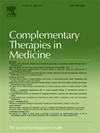Rehabilitation effects of acupuncture on the diaphragmatic dysfunction in respiratory insufficiency: A systematic review and meta-analysis
IF 3.3
3区 医学
Q1 INTEGRATIVE & COMPLEMENTARY MEDICINE
引用次数: 0
Abstract
Introduction
Mechanical ventilation after respiratory insufficiency can induce diaphragm dysfunction through various hypothesized mechanisms. In this study, we evaluated the rehabilitative effect of acupuncture on diaphragm function in patients with respiratory insufficiency using meta-analysis and summarised the rules of acupoints through association rules analysis.
Methods
Articles (published from January 2000 to February 2024) were retrieved from the following databases: PubMed, Cochrane Library, Embase, Web of Science, CNKI, VIP, SinoMed, and Wanfang. Two researchers conducted literature selection, data extraction, and statistical analysis independently. The risk of bias was assessed utilizing the Physical Therapy Evidence Database (PEDro) scale. The meta-analysis was performed with RevMan 5.4 software, and the quality of each outcome evidence was assessed via the online software GRADEpro GDT. The regularity of acupoint selection was summarized using association rules analysis. This study is registered on PROSPERO, number CRD42024526705.
Results
Eleven articles were eventually included, all of which were of low to moderate quality. Results of the meta-analysis showed a significant increase in diaphragmatic thickening fraction (MD 3.40 [1.52, 5.27]) and diaphragmatic excursion (MD 0.95 [0.58, 1.31]) in patients with respiratory insufficiency after acupuncture treatment. Also, OI (MD 28.52 [15.93, 41.11]) and PaO2 (MD 7.18 [2.22, 12.13]) were significantly elevated and PaCO2 (MD −6.94 [-12.30, −1.59]) was decreased. Mechanical ventilation time (MD-1.86 [-2.28, −1.45]) was also significantly improved. The overall quality of the outcome evidence is deemed moderate. Association rules analysis showed that ST36, RN4, RN6, and others are core acupoints for the treatment of diaphragmatic dysfunction in patients with respiratory insufficiency by acupuncture.
Conclusion
Acupuncture shows potential in the rehabilitation of patients with respiratory insufficiency and may serve as a complementary and alternative therapy for related conditions. We suggest the use of ST36 as a core acupoint, in combination with other acupoints. Due to the potential publication bias and high heterogeneity of the current data, further high-quality RCTs are needed to confirm these findings.
针灸对呼吸功能不全患者膈肌功能障碍的康复作用:系统回顾和荟萃分析
简介呼吸功能不全后的机械通气可通过各种假设机制诱发膈肌功能障碍。本研究采用荟萃分析法评价了针灸对呼吸功能不全患者膈肌功能的康复作用,并通过关联规则分析总结了穴位配伍规律:PubMed、Cochrane Library、Embase、Web of Science、CNKI、VIP、SinoMed 和 Wanfang。两名研究人员独立进行文献筛选、数据提取和统计分析。偏倚风险采用物理治疗证据数据库(PEDro)量表进行评估。荟萃分析使用 RevMan 5.4 软件进行,各结果证据的质量通过在线软件 GRADEpro GDT 进行评估。通过关联规则分析总结了穴位选择的规律性。本研究在 PROSPERO 上注册,编号为 CRD42024526705。结果最终纳入了 7 篇文章,所有文章的质量均为中低水平。荟萃分析结果显示,针灸治疗后,呼吸功能不全患者的膈肌增厚分数(MD 3.40 [1.52, 5.27])和膈肌偏移量(MD 0.95 [0.58, 1.31])显著增加。此外,OI(MD 28.52 [15.93,41.11])和 PaO2(MD 7.18 [2.22,12.13])显著升高,PaCO2(MD -6.94 [-12.30,-1.59])降低。机械通气时间(MD-1.86 [-2.28, -1.45])也有明显改善。结果证据的总体质量为中等。关联规则分析表明,ST36、RN4、RN6 等穴位是针灸治疗呼吸功能不全患者膈肌功能障碍的核心穴位。我们建议将 ST36 作为核心穴位,与其他穴位结合使用。由于目前的数据存在潜在的发表偏倚和高度异质性,因此需要进一步的高质量 RCT 研究来证实这些发现。
本文章由计算机程序翻译,如有差异,请以英文原文为准。
求助全文
约1分钟内获得全文
求助全文
来源期刊

Complementary therapies in medicine
医学-全科医学与补充医学
CiteScore
8.60
自引率
2.80%
发文量
101
审稿时长
112 days
期刊介绍:
Complementary Therapies in Medicine is an international, peer-reviewed journal that has considerable appeal to anyone who seeks objective and critical information on complementary therapies or who wishes to deepen their understanding of these approaches. It will be of particular interest to healthcare practitioners including family practitioners, complementary therapists, nurses, and physiotherapists; to academics including social scientists and CAM researchers; to healthcare managers; and to patients. Complementary Therapies in Medicine aims to publish valid, relevant and rigorous research and serious discussion articles with the main purpose of improving healthcare.
 求助内容:
求助内容: 应助结果提醒方式:
应助结果提醒方式:


